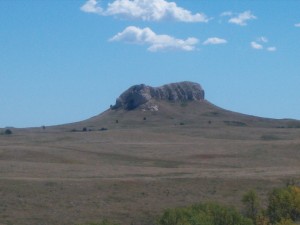I recently took a trip back to South Dakota to catch up with old family, friends, and mentors. This was a very quick and busy visit lasting only a few days. During my time there I had to drive over 400 miles and see many people. One of the main reasons for taking this journey was to hand deliver the book A Man Among the Helpers to some my teachers and mentors, because without them the book would have never been written.
I’m always so grateful for the incredibly powerful and helpful mentors I’ve had in my life. Somehow this average kid from Massachusetts got swept up and trained by the most powerful Medicine people of the Lakota Nation. I’m still – even to this day – realizing what exceedingly rare synchronicity led to this. If anything in my life can reveal the presence of the Wakan Tanka (The Great Mystery) it is this.
While visiting one such mentor by the name of Moves Camp I was told a story I would like to share here. During our visit we spoke about many things. Some of what he said is not for the uninitiated and some of what he said may be written in the next book. The story I’m about to share here is one of the tales that may be printed in the next book. I hope you enjoy!
Wanbli Hohpi
Eagle Nest
Back when the town of Wanblee South Dakota on the Pine Ridge Indian Reservation was settled there was a man who lived alone at the base of the nearby butte. This man’s name was Wanbli Hohpi, which means Eagle’s Nest. The people living in the new town of Wanblee began to call the butte Wanbli Hohpi also. It’s good because the butte has been home to a family of Spotted Eagles for generations. This is how Eagle Nest Butte got its name.
The man Wanbli Hohpi was an Eagle Catcher. In the old days of the Lakota there was a high demand for eagle feathers from live birds. Now- a-days eagle feathers from dead birds are used for regalia and ceremony, which is OK, but the best feathers are from birds that are still alive. These feathers have a special connection to life. Because of the high demand for these types of eagle feathers, some people’s profession was to catch eagles and pluck a few feathers. Once the feathers they needed were plucked, the bird would be released back to the sky. Wanbli Hohpi was one of these Eagle Catchers.
The profession of catching eagle is both difficult and dangerous. The Eagle Catchers must first dig a hole and then cover it will a stick frame. He then places bait on top of the frame and stays in the pit for days waiting for the eagles to come. When an eagle finally swoops to get the bait, the man jumps up and grabs ahold of the bird. This of course has to be done in a very careful and particular way – not only to protect the catcher but to also prevent injury to the eagle. The Eagle Catcher pulls only certain feathers- and not so many as to injure the bird or prevent it from flying safely. Day after day this is done to ensure he has a good supply of feathers and plumes.
Because this job was so difficult and because the feathers from live eagles were so prized, one eagle feather was traded for one horse. This was considered a fair exchange.
Now this job may not seem very dangerous but here is a story to illustrate that point.
There was once an Eagle Catcher who had his pit on a large hill near the Badlands, a few miles away from the town of Wanblee. One day this man was in his pit with his bait tied to the sticks above when he suddenly heard very heavy footsteps getting louder as they got closer. A huge shadow passed by the pit and he could abruptly hear something eating his eagle bait. A bear paw thrust into the pit and began to swipe around, trying to find more food. The man at the bottom of the pit had to lay flat and turn his head to avoid the massive claws. Luckily the bear paw didn’t make contact with the man and didn’t find any more food. After a while the bear lumbered away – again with heavy footsteps. As soon as the bear steps could no longer be heard, the man jumped out of the pit and ran off the hill. From that day forth the prominence has been called Bear Hill.


Hi!! I am originally from Wanblee, my family still lives there, an interesting item I would like to share, when we were children we went to the far east end of the Butte and inscribed our names and dates on the sand stone on the lone prominence there, there were a lot of very early old names there. Kind of like inscription rock in Wyoming! Am going back on vacation and am going to see if mine is still there and see if the early ones are still there!! I love the history of my people and want to thank you for your contribution!! Keep up the good work!!!
Very interesting article. My husband and I have an organization working in Wanblee, SD called Families Working Together. We have been going out there over 5 yrs. now and work directly with Jerome and Theresa High Horse. Visit us on facebook. Peace and Blessings
Very nicely done. Just driving by on 90 and Googled about it. Enjoyed reading it to the hubby as he drove. Thanks for sharing!
Thanks for visiting!